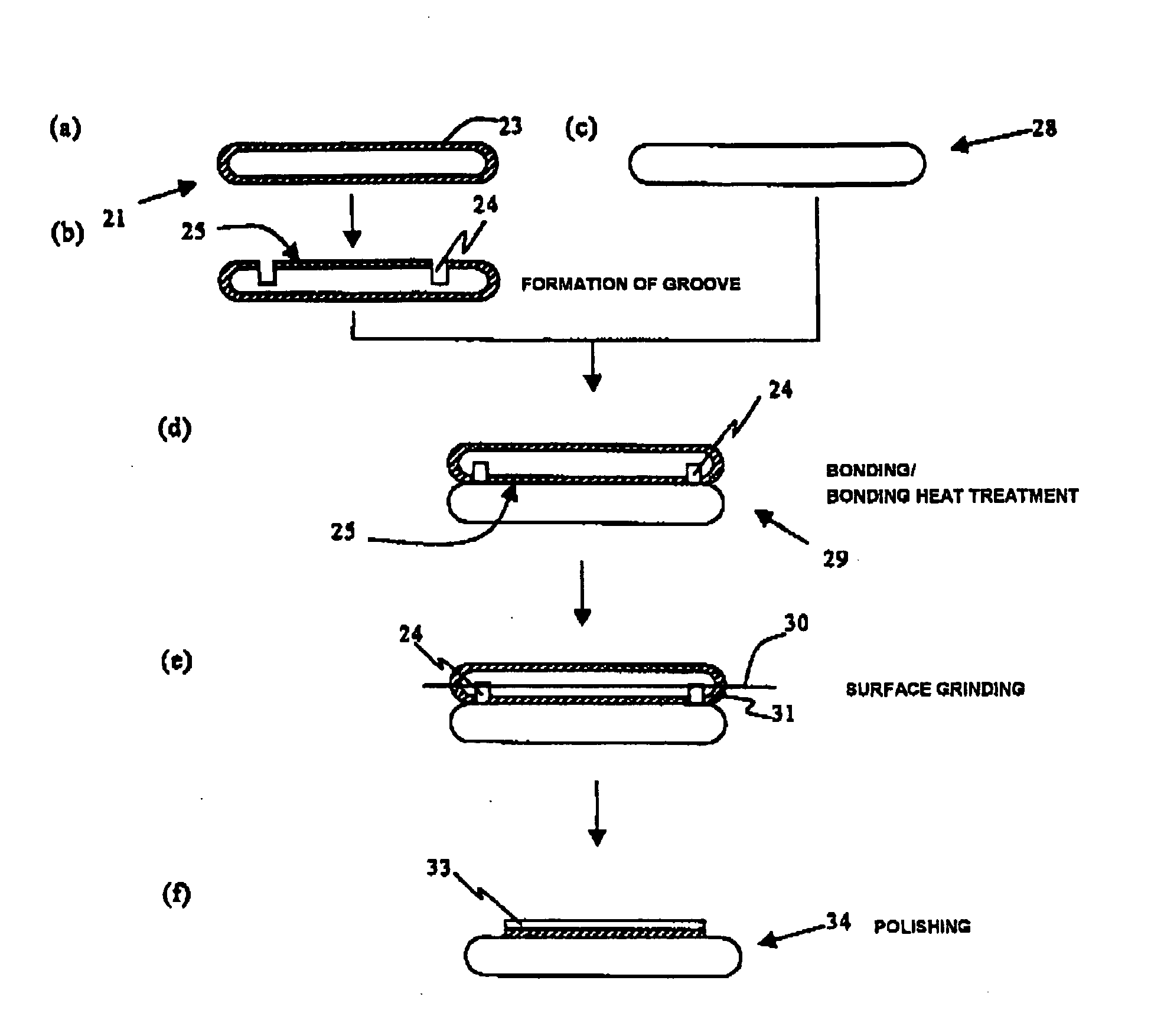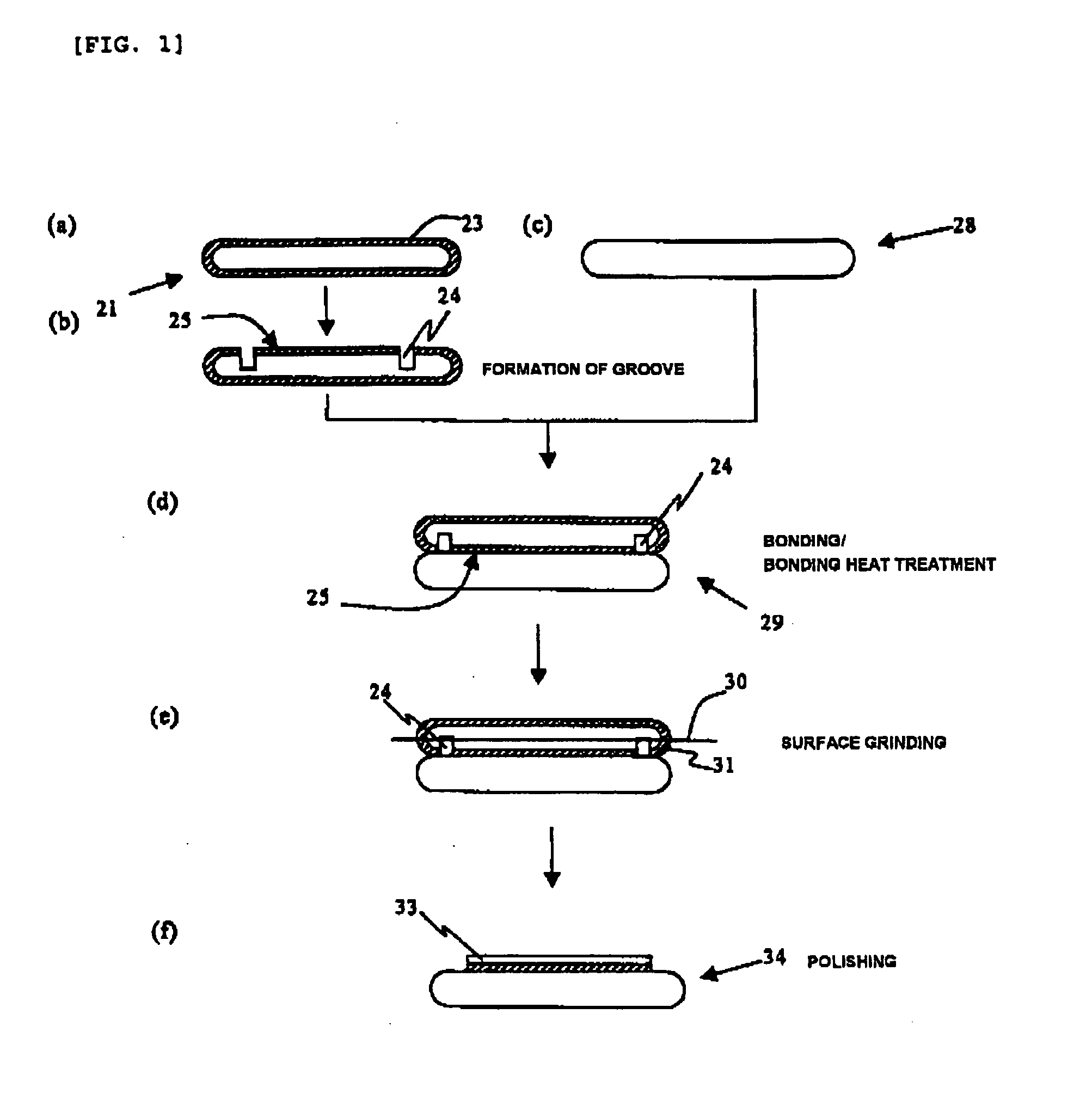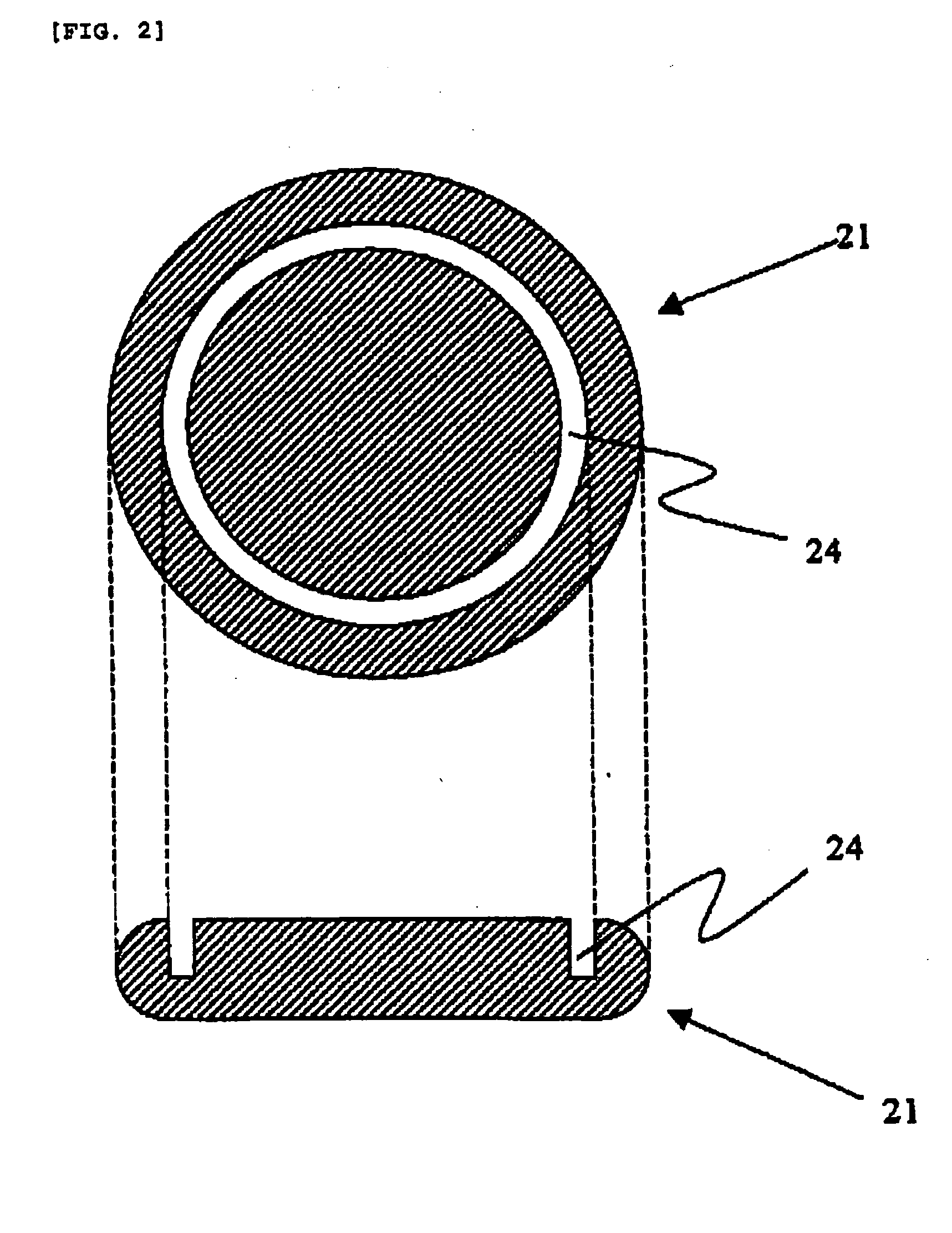Method for Manufacturing Bonded Substrate
a technology of bonded substrate and manufacturing method, which is applied in the direction of basic electric elements, electrical apparatus, semiconductor devices, etc., can solve the problems of reducing the yield of devices, the diameter of the entire bonded substrate becomes small, and the inability to use existing facilities and jigs, etc., to achieve excellent edge portion shape and reduce the film thickness of the bonded substrate
- Summary
- Abstract
- Description
- Claims
- Application Information
AI Technical Summary
Benefits of technology
Problems solved by technology
Method used
Image
Examples
example 1
[0084]A description will be first given on a method for reducing a film thickness of an active layer wafer based on surface grinding after the active layer wafer is bonded to a support substrate wafer.
[0085]A p-type single crystal silicon ingot having a resistance of 8 to 12 Ωcm pulled up by a Czochralski method was sliced to obtain a thin discoid wafer having a diameter of 150 mm (6 inches) and a thickness of 625 μm. An outer edge portion was chamfered to avoid breakage, cracks, and particle generation in the wafer, and then lapping was carried out to flatten the wafer. Subsequently etching was performed to remove a mechanical damage remaining on a surface of the lapped wafer. Further, primary mirror polishing was performed with respect to both front and back surfaces of the wafer, and a chamfer portion was also polished.
[0086]As explained above, the silicon wafer was subjected to primary mirror polishing, thereby providing an active layer wafer. A water jet guided laser was used ...
example 2
[0091]A description will now be given as to a method for reducing a film thickness of an active layer wafer after bonding the active layer wafer to a support substrate wafer based on an ion implantation and delamination method.
[0092]First, like Example 1, the silicon wafer was subjected to primary mirror polishing to provide an active layer wafer. A water jet guided laser was used with respect to this wafer to form a groove having a groove width of 100 μm and a groove depth of 10 μm in a region of a wafer periphery that is 1 mm apart from an outer periphery long the outer periphery as shown in FIG. 2. As a condition of the water jet guided laser at this step, a long-cycle pulse having a wavelength of 1064 nm was used. After forming the groove, mirror finishing was effected.
[0093]Subsequently, this active layer wafer was subjected to a heat treatment in an oxidizing atmosphere to form an oxide film on an entire surface of the wafer. This active layer wafer was subjected to hydrogen i...
PUM
 Login to View More
Login to View More Abstract
Description
Claims
Application Information
 Login to View More
Login to View More - R&D
- Intellectual Property
- Life Sciences
- Materials
- Tech Scout
- Unparalleled Data Quality
- Higher Quality Content
- 60% Fewer Hallucinations
Browse by: Latest US Patents, China's latest patents, Technical Efficacy Thesaurus, Application Domain, Technology Topic, Popular Technical Reports.
© 2025 PatSnap. All rights reserved.Legal|Privacy policy|Modern Slavery Act Transparency Statement|Sitemap|About US| Contact US: help@patsnap.com



